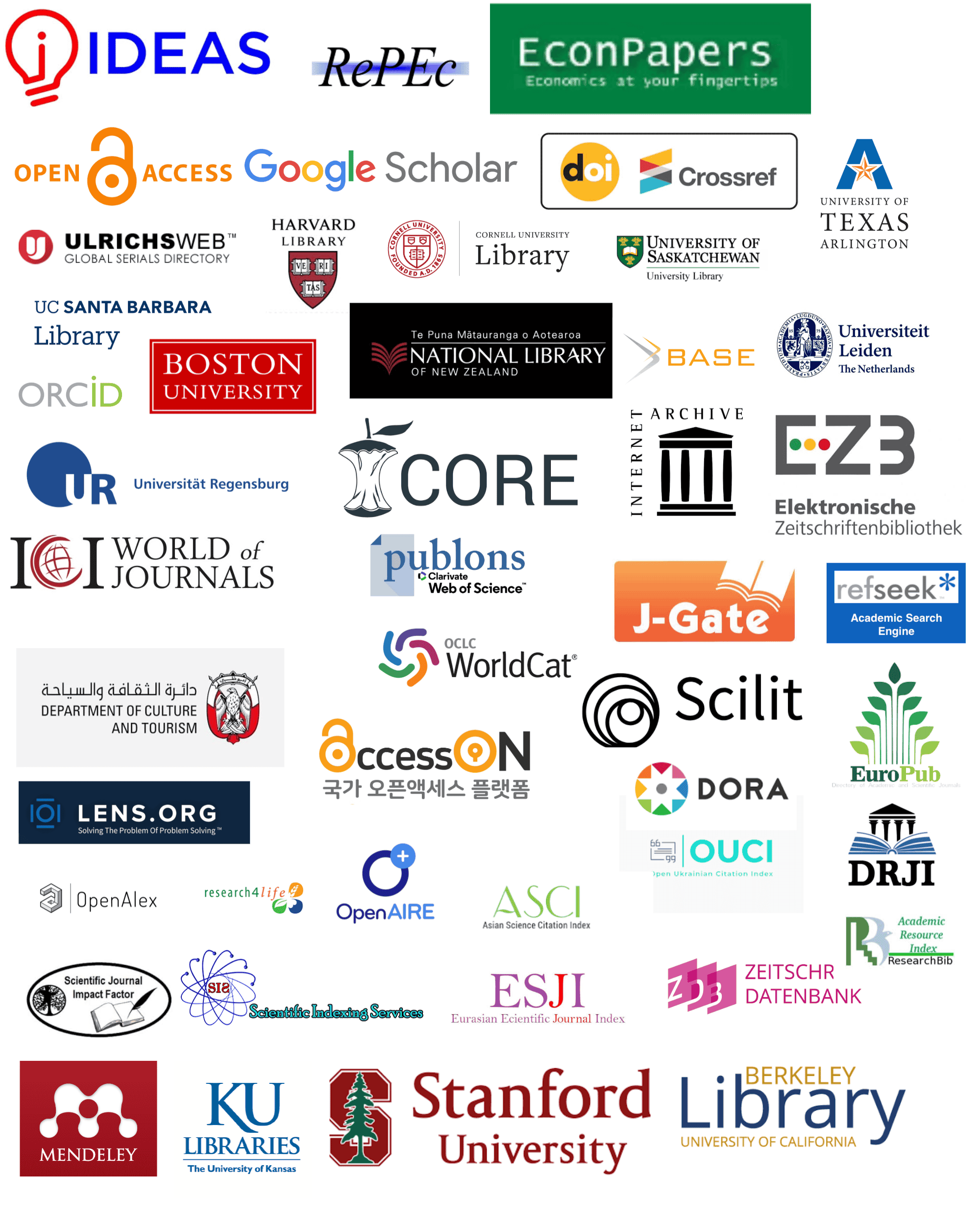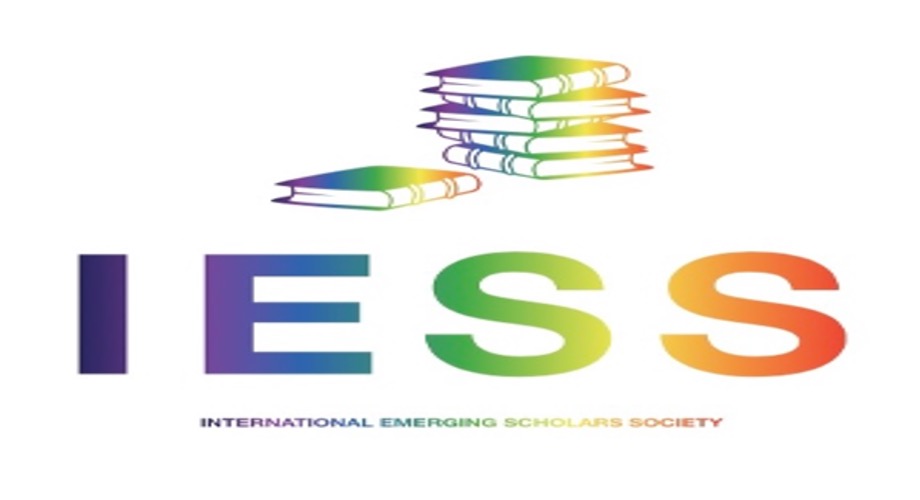Author Guidelines
Submission of an article implies that the work described has not been published previously (except in the form of an abstract or as part of a published lecture or academic thesis), that it is not under consideration for publication elsewhere, that its publication is approved by all authors and tacitly or explicitly by the authorities responsible where the work was carried out. However, we accept submissions that have previously appeared on preprint servers (SSRN); have previously been presented at conferences; or have previously appeared in other “non-journal” venues (for example: blogs or posters). Authors are responsible for updating the archived preprint with the journal reference (including DOI) and a link to the published articles on the appropriate journal website upon publication.
Publication Charges:
There are no submission or reviewing fees. Effective 1 April 2025, a USD 100 article processing charge (APC) will apply upon acceptance of the paper. This fee is set at modest level to cover essential operational expenses and support the journal’s open-access publishing model.
After making the payment, please email your payment receipt to contact@iessociety.org with your article title in the subject line.
Please note: APC fees are non-refundable once paid.
A discount or full waiver may be granted on a case-by-case basis, subject to prior approval.
General Requirements
Language
Please write your text in good English (American or British usage is accepted, but not a mixture of these). Use decimal points (not commas); use a space for thousands (10 000 and above). We only accept manuscripts in English language.
Length of paper
Length of 3000-8000 words is preferred. Longer articles are also welcome.
Page setup
Page size: A4
Margins: top-2.54 cm, bottom-2.54 cm, left-2.54 cm, and right-2.54 cm
Pages should be numbered.
Title Page
The title page should be a separate page before the main body. Provide the following information on the title page (in the order given). It should include:
Title
Times New Roman; Size-12; Line Spacing: Double; Paragraph Spacing: Before paragraph-1 line; After paragraph-1 line; Center
The title should be concise and informative. Titles are often used in information-retrieval systems. Avoid abbreviations and formulae where possible, and do not exceed 15 words.
Author names and affiliations
Please indicate the given name and family name clearly. The given name should be in front of the family name. Present the authors' affiliation (where the actual work was done) below the names. Provide the full postal address of each affiliation, including the country name. Then, list the email address, and, if available, the telephone and fax number of each author.
Corresponding Author
Clearly indicate who is willing to handle correspondence at all stages of refereeing and publication, also post-publication. Please add the words “corresponding author” into parentheses after his/her name.
General Rules for Text
Please use the following rules for whole text (except for the title), including abstract, keywords, headings, tables, references, acknowledgement, glossary and appendixes.
Front: Times New Roman; Size: 12
Paragraph Spacing: Before paragraph – 0.5 line; After paragraph – 0.5 line
Line Spacing: 1.15
Abstract
A concise and factual abstract is required (maximum length 250 words). The abstract should briefly state the purpose of the research, the principal results and major conclusions. An abstract is often presented separate from the article, so it must be able to stand alone. References should therefore be avoided but, if essential, they must be cited in full, without reference to the reference list.
Keywords
Immediately after the abstract, provide a maximum of 8 keywords, avoiding general and plural terms and multiple concepts (avoid, for example, 'and', 'of'). Be sparing with abbreviations: only abbreviations firmly established in the field may be eligible.
Main Body of Manuscripts
Subdivision of the article
Divide your article into clearly defined and numbered sections. Subsections should be numbered 1., 2., (then 1.1, 1.1.1, 1.1.2; 1.2, etc.) (the abstract, acknowledgement, references, glossary, and appendix are excluded from the section numbering). Use this numbering also for internal cross-referencing: do not just refer to 'the text.' Authors are urged to write as concisely as possible, but not at the expense of clarity.
Title of subdivision
Heading Level-1: Times New Roman; Size-12; Bold; for example,
Introduction
Heading Level-2: Times New Roman; Size-12; Italic; for example, 1.1 Research Methods
Heading Level-3: Times New Roman; Size-12; Normal; for example, 1.1.1 Analysis of Results
Tables
Number tables consecutively in accordance with their appearance in the text. Place descriptions of tables below the table body. Avoid vertical rules. Be sparing in the use of tables and ensure that the data presented in tables does not duplicate results described elsewhere in the article.
Tables should be:
Integrated into the submitted document.
Captioned above the table.
Should NOT be submitted as an image, but as MS Word-Table.
Subtitled with all units of measurement (metric units).
Borders setting: all; width: 1/2 pt.
Cited in the text as e.g. Table 1.
Figures, Photos, Illustrations
Figures, photos, illustrations and so forth should be:
Of reproducible quality and attached in TIF format or in JPG format. They should have a minimum resolution of 300 dpi.
Integrated as well into the submitted document at the appropriate place.
Accompanied by a clear legend or key, if necessary.
Presented with metric units.
Captioned below the figures.
Cited in the text as e.g. Figure 1.
Formulae
The text size of formulae should be with the same as normal text size.
Acknowledgement and Sponsoring information
Put the acknowledgement or sponsoring information after the main body and before the references.
References
Responsibility for the accuracy of bibliographic citations lies entirely with the authors. We use the APA style citation system (American Psychological Association). You are referred to the “Publication Manual of the American Psychological Association”, and you may find relevant details at: www.apa.org
Details concerning the APA-style citation system can also be found at http://linguistics.byu.edu/faculty/henrichsenl/apa/apa01.html
Citations in the text
Please ensure that every reference cited in the text is also present in the reference list (and vice versa). Avoid citation in the abstract. Unpublished results and personal communications should not be in the reference list but may be mentioned in the text. Citation of a reference as 'in press' implies that the item has been accepted for publication.
Citing and listing of web references
As a minimum, the full URL should be given. Any further information if known (author names, dates, reference to a source publication, etc.) should also be given. Web references can be listed separately (e.g., after the reference list) under a different heading if desired, or they can be included in the reference list.
Text
Citations in the text should follow the referencing style used by the American Psychological Association (APA).
List
References should be arranged first alphabetically and then further sorted chronologically if necessary. More than one reference from the same author(s) in the same year must be identified by the letters "a", "b", "c", etc., placed after the year of publication.
DOIs in References
The journal/publisher encourages authors to cite those items (journal articles, conference proceedings, book chapters, technical reports, working papers, dissertations, etc.) that have DOIs. When the cited items have DOIs, the authors should add DOI persistent links to the regular references. The DOI persistent links should be the last elements in the references. The persistent links should be active.
Format of persistent link: https://doi.org/+DOI (without “doi:”)
Example of persistent link: https://doi.org/10.1109/2.901164
The authors or editors may retrieve articles’ DOIs at: http://www.crossref.org/SimpleTextQuery/
You can open a free account, to start retrieving articles’ DOIs. CrossRef allows you check multiple references. Please read this webpage very carefully. Only articles with assigned DOIs can be retrieved through the above mentioned webpage.
Examples:
Reference to a journal publication:
Kornack, D., & Rakic, P. (2001). Cell Proliferation Without Neurogenesis in Adult Primate Neocortex. Science, 294(5549), 2127–2130. https://doi.org/10.1126/science.1065467
Reference to a book:
Strunk, W., Jr., & White, E. B. (1979). The elements of style. (3rd ed.). New York: Macmillan. p. 12.
Reference to a chapter in an edited book:
Mettam, G. R., & Adams, L. B. (1994). How to prepare an electronic version of your article. In B. S. Jones, & R. Z. Smith (Eds.), Introduction to the electronic age (pp. 281-304). New York: E-Publishing Inc.
Glossary
Technical language should be accompanied by a comprehensive glossary of terms used. Entries in the glossary should be presented in alphabetical order.
The glossary list should follow the Reference List.
Appendix
Please be sparing in the use of appendices unless they are absolutely necessary, the appendixes should be numbered as, e.g., Appendix 1, Appendix 2, etc.


